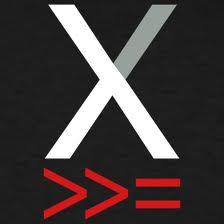 Vi presento oggi questo utilissimo articolo che introduce Xmonad, un windows manager alternativo, l’articolo è di Fabio Viola e lo trovate insieme a molti altri articoli interessantissimi sulla pagina del SaLUG Journal, l’articolo è rilasciato sotto GNU Free Documentation License.
Vi presento oggi questo utilissimo articolo che introduce Xmonad, un windows manager alternativo, l’articolo è di Fabio Viola e lo trovate insieme a molti altri articoli interessantissimi sulla pagina del SaLUG Journal, l’articolo è rilasciato sotto GNU Free Documentation License.
La settimana scorsa in quel di Bologna ho avuto il piacere di conoscere un geek padovano, un ragazzo in gambissima con il quale ho poi scambiato quattro chiacchiere.
Mi ha fatto conoscere un progetto interessantissimo, si tratta di xmonad. Sul sito ufficiale[0] e’ presente una frase che o vi colpisce e vi porta a divorare ogni pagina della documentazione o vi fa chiudere in un batti baleno la scheda del browser: “In a normal WM, you spend half your time aligning and searching for windows.” Se vi riconoscete in questa frase allora xmonad e’ cio’ che fa per voi. Di cosa si tratta?
Di un window manager intelligente scritto in Haskell la cui peculiarita’ principale e’ quella di posizionare automaticamente le finestre senza sovrapposizioni. Xmonad ha numerosi vantaggi (che reperiamo gia’ nella homepage del progetto): tiling delle finestre, minimalismo, stabilita’ (e avendolo provato intensamente posso confermare), estendibilita’, molte feature (ad esempio supporta xinerama), semplicita’, supporto…
Continue reading »

 Mai sentito parlare di Anki ?
Mai sentito parlare di Anki ?



